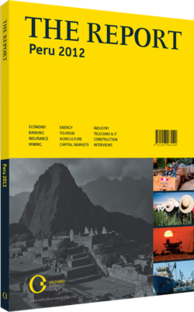OBG talks to Miguel Rivera, President, Nextel, and Javier Manzanares, President, Telefónica

Interview: Miguel Rivera, Javier Manzanares
What investments are needed to improve telecommunications infrastructure, and what is currently being done to develop the sector?
MIGUEL RIVERA: One necessary element is that the political will to get things done has to extend to the local authorities. In a decentralised country, all the counties and municipalities decide for themselves whether an infrastructure project is viable or not. Since telecommunications is a service industry, there is not a lot of endorsement from the central or local authorities in relation to improving its infrastructure. In some counties, attitudes can be quite negative since some believe that telecoms infrastructure could have health effects or think it is ruining the landscape. These negative attitudes have an impact on the users. What is needed, therefore, is more widespread understanding that in the end what we are offering is a public service. There must be public-private cooperation to secure the necessary infrastructure.
On the other hand, the government has been promoting fibre optics, which is a new development. This is due to the fact the sector is moving from voice to data, which means there is more need to move megabytes, and that requires a backbone. That is our next challenge. If this shift happens, it will facilitate the growth of the industry, enabling us to be better equipped to provide services to the people and the businesses that we serve at the moment.
JAVIER MANZANARES: What is certainly needed is penetration of the rural areas. Today, the major cities along the coast have access to modern telecommunications infrastructure, but it is also necessary to penetrate the highland and rainforest regions. A few years ago we began a project to install fibre-optic cables in the Andean highlands in Cuzco and Ayacucho, which will enable the use of both mobile phones and landlines. The project is also being implemented in the rainforest regions.
Although mobile phones are used all over the country, there are still some small localities in the provinces that do not have mobile phone coverage. A challenge for communications infrastructure – and infrastructure in general – is the fact that the population is quite dispersed. In rural regions, people often live in very small communities far away from each other. Both the public and private sector need to make an effort to reach all of these citizens. Here, public-private partnerships are crucial.
How much demand for telecommunication services are you expecting in the provinces?
MANZANARES: At the moment Telefónica is experiencing more growth in the provinces than in Lima. Some years ago, Lima represented 70% of our growth rate while the provinces accounted for only 30%. Now it is the opposite. Consumption levels are rising in the provinces, which is evident not only in relation to telecommunications, but in the number of shopping malls that are being built in these regions. The challenge is not penetrating the provinces but penetrating the rural areas. Decentralisation of the economy has already taken place in Peru, and I believe there is more room for sector growth in the provinces than in Lima, where everyone already has mobile phone services. I think the growth potential in Lima is more related to broadband internet access.
RIEVERA: We have over 100% penetration in Lima, but in the provinces this percentage is much less. At the moment, the rate of growth in the provinces is exceeding that of Lima. And as has already been pointed out, this is visible in the number of new malls that are popping up. Modernity is spreading across the country, which means many opportunities for new developments in telecommunications, construction, infrastructure and services. We are only just beginning to see growth in the country, which will keep us moving quickly for the next five to 10 years at least. Pre-pay customers dominate some 80% of the total market, and the challenge is to convert a large share of those into longer-term post-pay clients.
What are your expectations from broadband and other services to diversify revenue sources?
RIVERA: At Nextel, we have high expectations and believe there is real opportunity for growth in these areas. Voice services are becoming a commodity, and we need to offset the decline in the price of voice services with data. We believe this is an area for growth, and we are therefore using new data-enabled technology called 3GPTT with a third-generation network that offers the chance to upload and download videos, etc.
MANZANARES: At the moment, we are heavily investing in broadband access. It is obviously important for the growth of the company and the sector, but most of all for the development of the country. It will improve productivity and, consequently, the competitiveness of the country. That is also why the fibre-optic cables we are installing in the highlands are so important – they guarantee a good broadband connection. The existing broadband connections in the provinces rely on microwaves. This technology does not, however, enable expansion in terms of velocity.
The number of broadband connections has been increasing at more than 30% per year, and in 2011 we crossed the landmark of 1m households that have broadband connection. This has to do with a change in the price of computers as well. In rural areas, the easiest way to guarantee broadband access would be via a mobile broadband connection based on fibre-optic technology. It is a big challenge to access all the regions that we eventually want to reach with fibre-optics. For example, Iquitos, a very important city in the north of the Amazon rainforest, is quite isolated from the rest of the country. In the short run, it will be difficult to reach this type of place with fibre-optic technology.
How do you perceive Peru as an investment destination for telecoms operators, especially in regard to governmental licensing disputes?
MANZANARES: Peru is showing both political and economic stability in a challenging international context. It respects the rules of the game and there is judicial stability. Therefore, it is a country that should be receiving a lot more private investment. We have no doubts about investing. Our investment in Peru since 1994 has totalled more than $6.8bn. In fact, in 2011, which was a year of international instability and local political change, we increased our investment here by 7%. The fact that there has been a change in government does, however, mean that we will have to renegotiate the terms of our concessions if we wish to renew them. Since the new government is more focused on social inclusion, it has put special emphasis on renegotiating the terms of our concessions in the provinces.
All in all, we have faith in the country’s legal system, and we are confident that our concessions will be renewed, even if it means some changes in the terms. In general, there is a very optimistic atmosphere regarding the economy, and this optimism is exhibited by both business owners and consumers. The current growth rate of over 5%, coupled with low inflation, is not something that is happening a lot on a global scale.
RIVERA: Peru has been growing steadily for the past 15 years, outpacing many other countries. I think this trend will continue. One reason is that the previous governments have been successful in creating stability. As an investor, you can sign a stability agreement with the government that states that no matter what, even if the rules change later, you will not be affected. That creates an atmosphere of trust. The current government has been following the same track in making efforts to ensure investor confidence.
However, the fact that the country has reached 100% penetration means that as an operator you have to first get a concession from the government and deal with the local authorities before you can begin operations. Perhaps a few years after that it will be possible to start competing with other companies for customers. The only way to do that is to differentiate yourself, usually by offering discounted prices, which will affect the timeframe for expected returns.
You have reached the limit of premium articles you can view for free.
Choose from the options below to purchase print or digital editions of our Reports. You can also purchase a website subscription giving you unlimited access to all of our Reports online for 12 months.
If you have already purchased this Report or have a website subscription, please login to continue.

